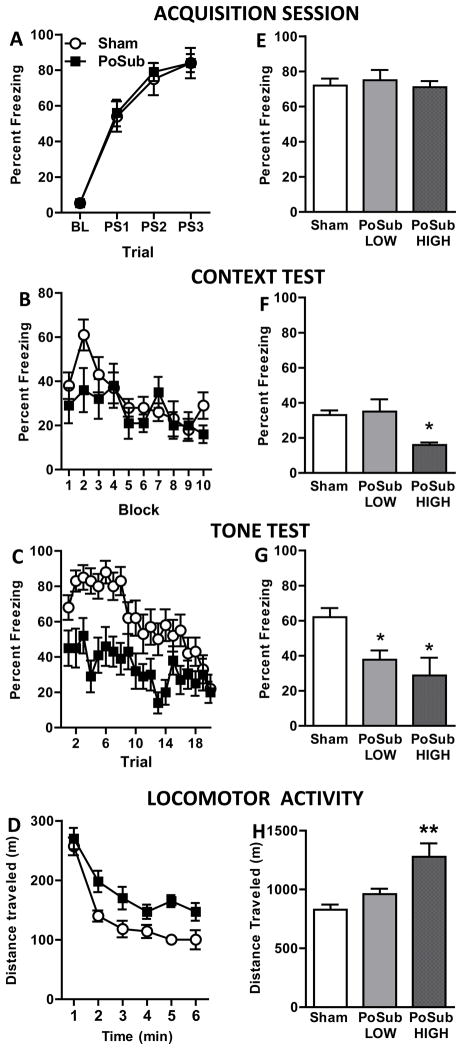Figure 4.
Experiment 2 – Freezing behavior and locomotor activity. Freezing behavior: Effects of post-training postsubiculum (PoSub) lesions on freezing behavior of lesioned (n = 14) and Sham-operated (n = 15) groups during the Acquisition session (A) and during the Context (B) and Tone (C) tests. BL, baseline; PS1 – 3, postshock 1 – 3. Bilateral lesions of the PoSub significantly decreased freezing during the Tone test, but had no effect on freezing during the Context test. Locomotor activity: Average open field activity demonstrating that PoSub lesioned-rats (n = 14) were hyperactive compared to Sham-operated rats (n = 15) and that both groups habituated to the open-field over time (D). Relationship between freezing behavior and locomotor activity: Postshock freezing data from PoSub-lesioned rats was divided into normo-active (PoSub-Low, n = 8) and hyperactive (PoSub-High, n = 6) groups and replotted for the Acquisition session (E) and the Context (F) and Tone (G) tests. Replotted locomotor activity of sham, normo-active and hyperactive groups (H). Data represent means ± standard errors. *p <05 compared to Sham-operated group. **p <05 compared to Sham-operated and PoSub-Low groups.

